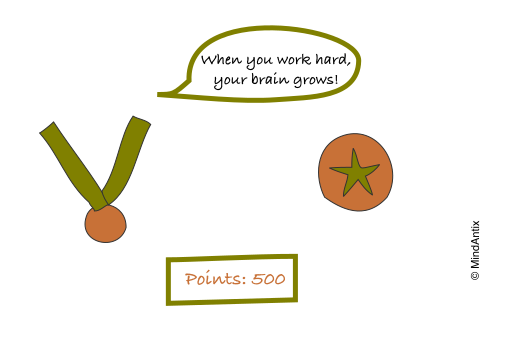In a recent study researchers wanted to explore the relationship between rewards and motivation in the context of education. In order to understand the impact of gamified elements on student motivation and learning, they designed a long-term study for students enrolled in a semester long course. Students were divided into two groups – a gamified group that used a reward system aligned with the learning goals, and the control group that received the same instruction but without any gamified elements. They looked at student grades at the end of the course along with student surveys, and confirmed what some educators had always suspected.
The researchers found that the non-gamified group not only did better at the end of the semester exam, they also reported higher levels of motivation and satisfaction at the end of the class! As the researchers explain, “The results suggest that at best, our combination of leaderboards, badges, and competition mechanics do not improve educational outcomes and at worst can harm motivation, satisfaction, and empowerment. Further, in decreasing intrinsic motivation, it can affect students’ final exam scores.”
While typical gaming elements like points and badges can lead to increased engagement in the short term, it is now believed that the initial appeal is due to a novelty effect, and that engagement and motivation decline as the novelty wears off. And this effect is more pronounced for younger age groups, where novelty and interest declines faster.
Educational products routinely employ rewards like badges and scores to get initial interest and traction among users, however, as research is now pointing out, these elements have negative long term consequences as they promote extrinsic motivation instead of building intrinsic motivation among students.
So, how can we design educational products that focus on building students’ intrinsic motivation?
Edward Deci and Richard Ryan, professors of Psychology, have studied motivation for several decades and developed the Self Determination Theory (SDT) of motivation. According to their theory, three innate psychological needs play a role in motivation – competence, autonomy and relatedness. The main premise behind their theory is that humans have an inherent tendency to learn, have agency in their development and connect to others. Their theory has been widely used in many contexts, including gamification.
Based on the underlying theory of self determination, here are some high level product approaches that can be used in lieu of rewards to build the right kind of motivation:
Exploration
Creating a playful environment that leads to self-directed exploration ties to the underlying need for autonomy and competence. Games or products should allow for the freedom to fail, by allowing users to recover from mistakes without penalty. Games should also provide a freedom of choice, where users can decide what they want to work on or what skill to develop.
Feedback
In a classroom, feedback can be slow and constrained as teachers can only provide feedback one at a time. Games where feedback can be immediate can have a positive impact on the need for competency. Feedback messages that are actionable (guide the student in the right direction) and focus on growth mindset have been found to be effective.
Collaboration
A typical classroom environment fosters competition among students instead of collaboration, which in turn reduces intrinsic motivation. Elements like leaderboards have the same effect due to social comparison. A better way would be to design products that allow meaningful collaboration among students, and tap into the need for relatedness. Social cues that signal working together have been found to boost intrinsic motivation.
Intrinsic motivation has been found to link positively to learning outcomes as well as personal wellbeing. Introducing the right kind of gamified elements into product elements can boost intrinsic motivation among students, but it involves walking away from more traditional elements in games like badges and points.

